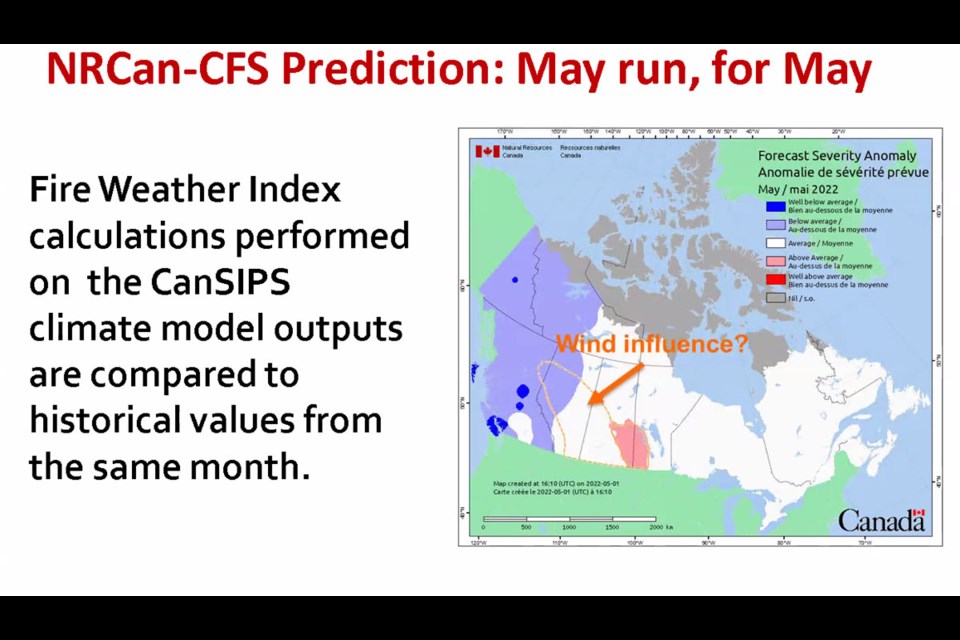Cooler and wetter than average conditions throughout the spring and early summer are expected to result in a less intense wildfire season in the Prince George region, according to national predictions released on Friday.
Fire weather index maps released by Natural Resources Canada show a below average fire risk in the region in May and June, rising to average in some parts of the region in July. The models predict a hot, dry August with above-average fire risk, before returning to average risk levels in September.
“The northern area (of B.C.) probably will stay a bit cooler and wetter,” Natural Resources Canada fire research analyst Richard Carr said. “From this point of view, we don’t expect a huge amount of (fire) activity in that region. Cooler temperatures will limit fire activity in the northern half of the province.
The weather is currently in the second year of a La Nina cycle, Carr said, which is caused by cooler than normal waters in the eastern and central Pacific Ocean. La Nina weather patterns are linked to cooler temperatures and increased rain from B.C. to Quebec, according to Environment Canada.
“We are off to a very different start than in 2021,” Carr said. “Our snow cover is lingering a little longer than it normally does.”
Less drought conditions are being seen across the country, he added.
Natural Resources Canada compares multiple computer weather models, which don’t all agree, Carr said. But most of the models show hotter, drier conditions starting in July – especially in the southern parts of the country, he said.
“(And) everything is predicting warm conditions in August across the country,” he added. “With widespread warm and dry conditions, we expect things to peak in August.”
However, they are not predicting conditions as extreme as last year’s “heat dome” that killed 526 people in B.C. in late June and early July last year.
“Last year was an anomalous year,” Carr’s colleague Piyush Jain said. “More than 100 million people were exposed to (wildfire) smoke in North America last year. That’s more than any year in the last 20 years.”
Wide-spread heatwaves caused multiple, simultaneous major fires throughout North America which contributed to smoky skies conditions across the continent, Jain said.
While a less-intense fire season is predicted this year “even in a cool year you can get a serious fire,” Carr said.
According to the B.C. Wildfire Dashboard, one fire was burning in the Prince George Fire Centre region on Friday.
The human-caused fire, located near Bear Flats in northeast B.C., was eight hectares in size as of Friday afternoon.



